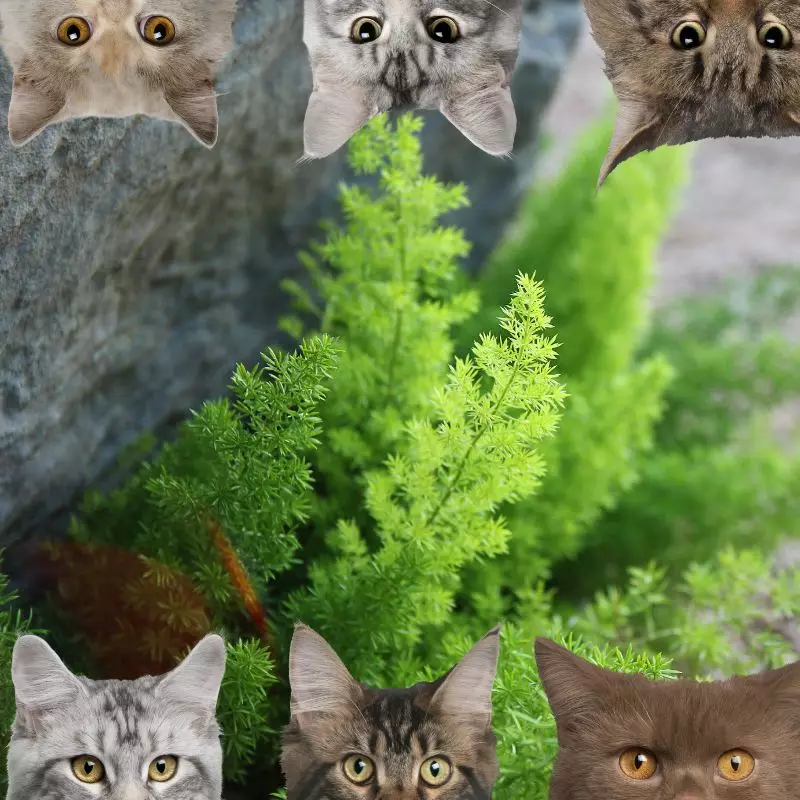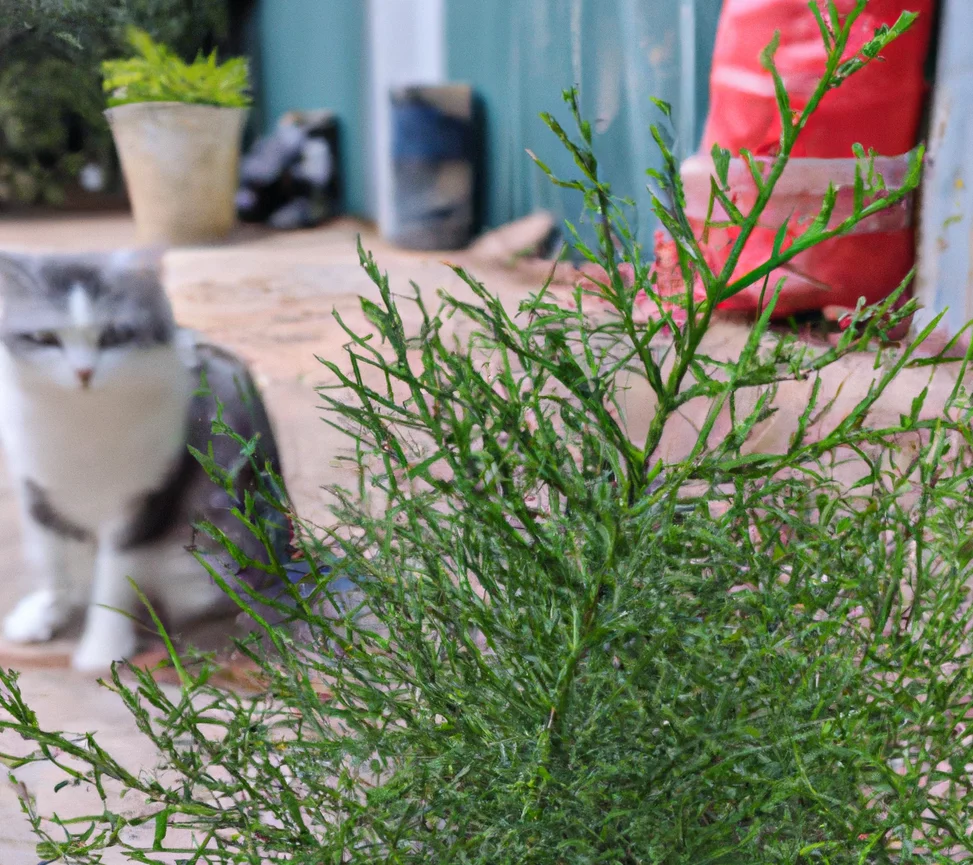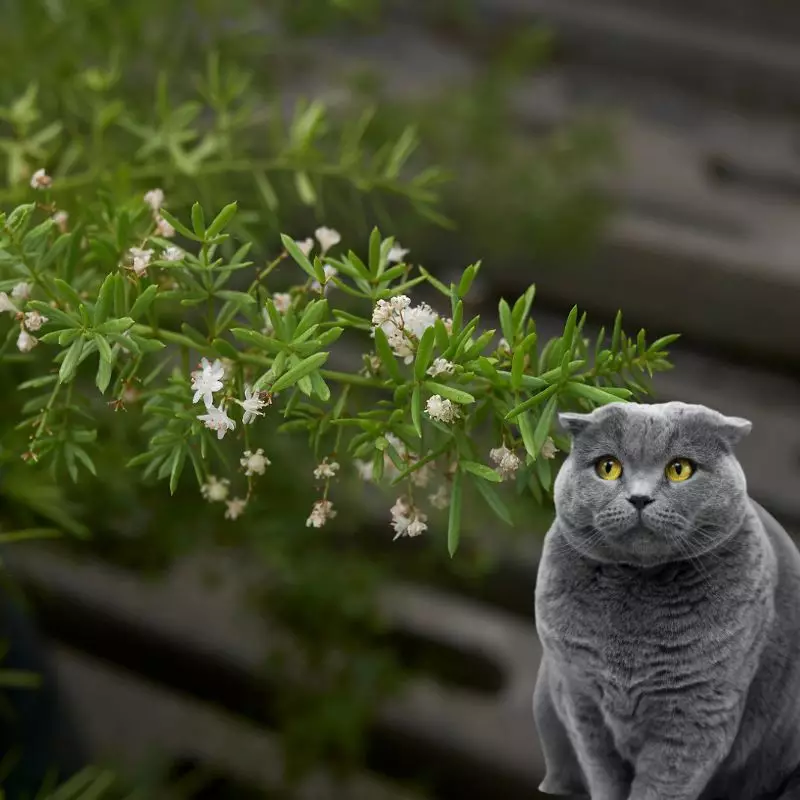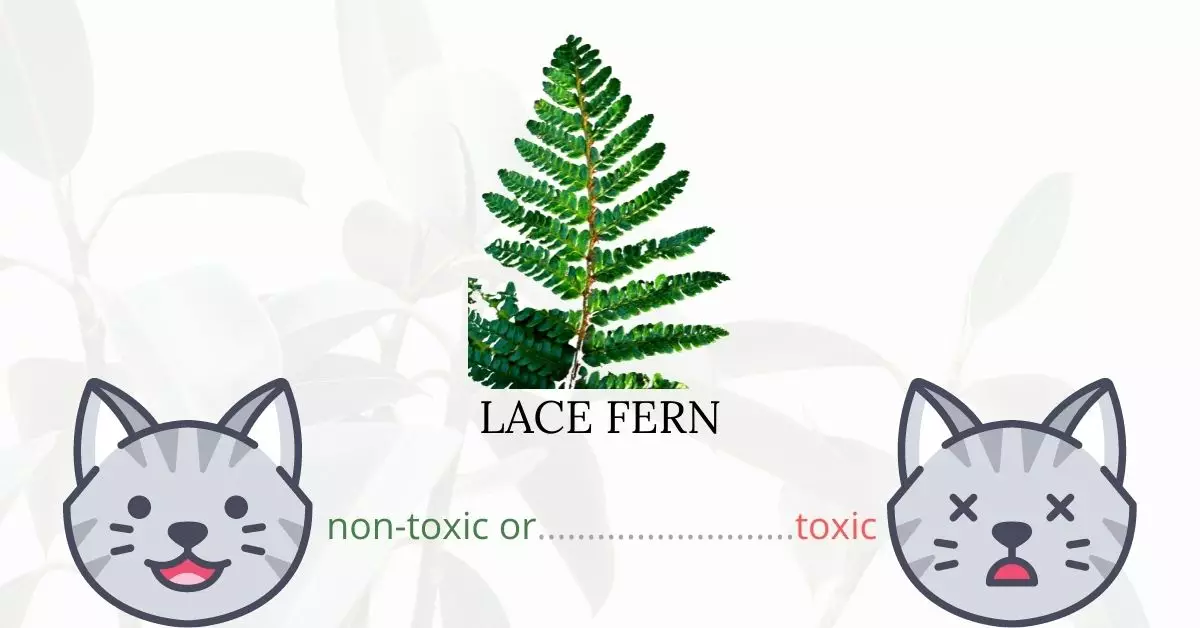Yes, lace ferns are toxic to cats. Lace fern, a prevalent evergreen perennial often found in flower arrangements, contains sapogenins that can irritate a cat’s skin and gastrointestinal tract upon contact. Symptoms include skin irritation, vomiting, and diarrhea. Although lace fern poisoning in cats isn’t typically life-threatening, it’s crucial to consult a veterinarian promptly if your cat comes into contact with this plant to ensure the complete removal of toxins from their system.
This article was meticulously crafted in collaboration with a team of experienced DVMs (doctors of veterinary medicine). Their valuable insights ensure we present accurate and up-to-date information on the potential risks associated with various plants, particularly lace ferns, and their effects on cats. Moreover, our findings are reinforced by thorough research from high-authority websites such as ASPCA and PetMD.
Clinical Signs of Lace Fern Poisoning in Cats

When cats come into contact with lace fern plants or ingest their berries, they might experience a variety of symptoms due to the sapogenins present in the plant. Sapogenins are particularly concentrated in the berries and are known to be toxic to cats. Here’s a deeper dive into the clinical signs and their causes:
- Inflammation of the skin: Direct contact with the lace fern can result in skin inflammation. The sapogenins act as irritants, causing redness, itchiness, and discomfort on the cat’s skin. This is especially the case if a cat brushes against the plant or plays with it.
- Pain in the abdomen: Ingestion of the plant, especially the berries, can lead to acute abdominal pain. The sapogenins disrupt the cat’s normal gastrointestinal function, leading to discomfort in the abdomen.
- Vomiting: The toxic sapogenins in the lace fern can upset the cat’s stomach, leading to vomiting. This is the body’s natural reaction to expel the harmful substances it has consumed.
- Diarrhea: Along with vomiting, diarrhea is another common symptom of lace fern poisoning. It’s a way the body tries to eliminate the toxins from the system. The irritants from the plant cause a rapid increase in bowel movements, leading to loose stools.
If you notice any of these symptoms in your cat after exposure to lace ferns, it’s crucial to seek veterinary attention promptly.
First Aid and Treatment of Lace Fern Poisoning in Cats

The treatment given to your cat will be determined by the symptoms that your cat is showing. If your cat’s poisoning has just caused skin irritation, the vet may prescribe a topical corticosteroid to alleviate the swelling and itching.
Treatment will be different if your cat has eaten the lace fern plant. The vet may choose to use a hydrogen peroxide solution to induce vomiting in your cat, which can be given to him orally, or perform gastric lavage, also known as a stomach wash. The vet will most likely prescribe activated charcoal to absorb any lingering poisons in your cat’s gut once all of the lace fern plants have been removed from his stomach. The vet can give your cat either Kapectolin or sucralfate, which produces a thick paste that coats the stomach lining and prevents additional discomfort and vomiting.
Recovery from Lace Fern Poisoning in Cats

Within 24 hours, most cats will begin to recover from lace fern poisoning. To help with the skin irritation, your veterinarian may prescribe a corticosteroid that you can use topically or give orally to your cat. Your veterinarian may also advise you to convert your cat to softer meals that are less harsh on the stomach. This is needed to allow your cat’s body to heal after being induced to vomit and having a gastric lavage. If your cat’s condition worsens following therapy, set an appointment with your veterinarian right away.
Prevention of Lace Fern Poisoning in Cats
The lace fern plant should be removed from your home or yard if you have one. If you suspect your cat came into contact with it in someone else’s yard, keep your cat indoors as much as necessary to limit additional exposure.
If you love plants but have cats at home, check out these lists:





